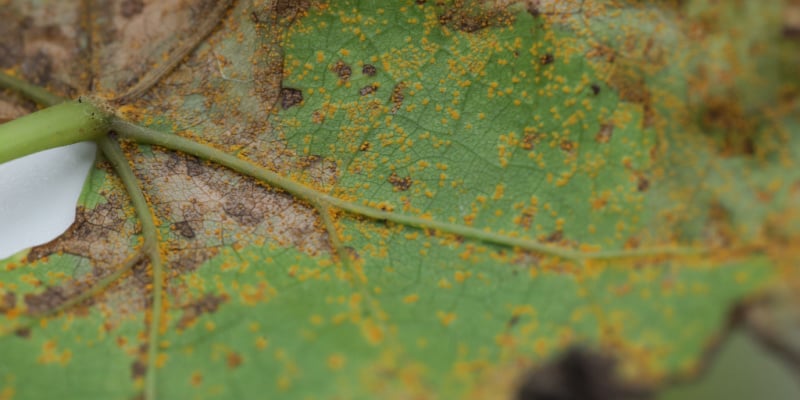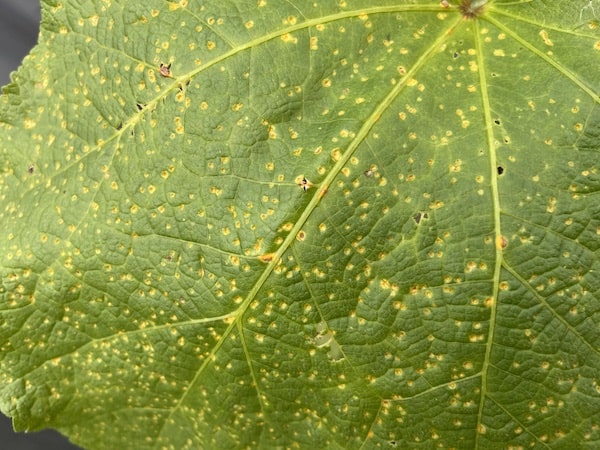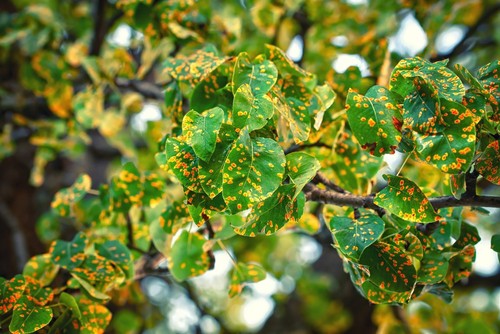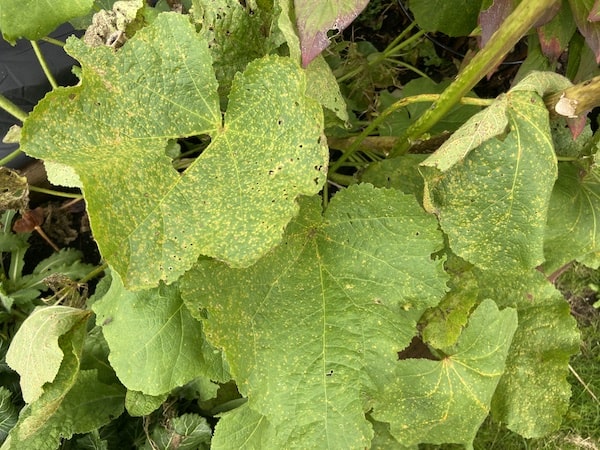
Rust disease on plants – treat and prevent
Our site is reader supported, this means we may earn a small commission from Amazon and other affiliates when you buy through links on our site.
What is Rust Disease?
One of the most common diseases I see on plants (and one that can even give powdery mildew a run for its money) is rust disease. It is easily identifiable because of the coppery-orange spore pustules that appear on the surface of the leaves. Even though it can be unsightly to see on your plants, it isn’t usually a disease that is fatal and can often be controlled with a fungicide.
In fact, many fungicides available will help prevent rust and powdery mildew simultaneously, and I usually apply fungicides as a preventative measure rather than a treatment. I’ve always had success doing this by spraying the leaves from the early spring, even though you usually notice rust until mid to late summer. I use fungicides that are labelled as suitable for rust on my roses, hollyhocks and fuchsias, as well as my antirrhinums. Rust will also attack trees and many other plants in the garden, and although it’s not usually fatal, it is very unsightly.
Going back to antirrhinums, the real issue with these plants is that antirrhinum rust (unlike most other plants) can actually kill the plants in very severe cases. It’s also worth noting there are different types of rust and most only affect a certain species of plant. For example, the rust on your roses is not the same type as the ones found on your fuchsias.
How to recognise Rust Disease?
Rust shows up on your plants as coppery orange (rust-coloured) spores on the surface of the leaves, however, depending on the type of rust these spores can also be red, yellow, black or brown. You may also see rust on many different types of plants and even on fruits or flowers. You can also sometimes notice the yellowing of the leaves that then fall off.
All this generally appears in mid to late summer and autumn, and can quickly spread amongst the plants you have in the garden. Luckily, rust is very easy to identify, so you can treat the problem quickly.
What can you do about it?
Preventing rust
I like to try and prevent (or at least hold back) rust by spraying the plants that I know are really prone to rust, for example, my hollyhocks, roses, and cornflowers. To prevent rust, I spray my plants with a fungicide in the spring to help prevent said diseases, but also black spot.
I also recommend that you avoid feeding your plants with an excess of nitrogen in your fertiliser because this encourages the growth of lush foliage, which is a great home for rust to move into. Once you identify rust you need to act quality to help protect the plants. Remember it’s not usually fatal but plants can look a mess.
Treating plants with rust
As soon as rust appears, remove the infected leaves and stems, and any other parts of the plants that are infected. It’s best to burn these diseased plant cuttings to stop the rust from spreading through your compost pile or bin if you throw them there. I have even in the past gone to the extent of removing all leaves if the rust is on the majority of the leaves. I sometimes prune them back too to encourage new growth.
I then recommend spraying the plant with a fungicide labelled for use on rust to help prevent further occurrences of this disease. Be careful to remove all dead and diseased material at the end of the growing season. Rust spores are hardy and survive during the cold winter months, ready to re-emerge in the spring. A quick search on amazon or a quick trip to your local garden centre will get you a fungicide labelled for rust such as Fungus Clear Ultra, and Provanto Fungus Fighter Plus.


